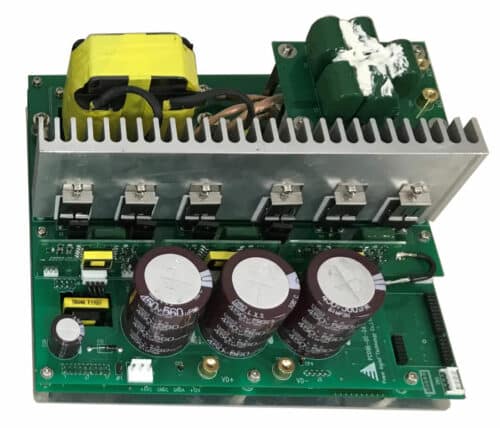ROHM Semiconductor has introduced a 5kW fan-less inverter with 99% efficiency, transforming residential solar power conversion.

A 5kW high-efficiency fan-less inverter offers several advantages for power conversion needs, especially in medium-sized residential solar systems. Its primary role is converting DC power into usable AC. Being high-efficiency, it ensures minimal energy loss during this conversion, optimizing system performance. The fan-less design enhances its appeal by ensuring silent operation, increased reliability due to the absence of moving parts, and reduced maintenance needs. ROHM Semiconductor has launched a 5kW high-efficiency fan-less inverter reference design to simplify the design process. In the inverter designs, the trans-linked interleaved circuits use the high-frequency switching capabilities of silicon carbide (SiC) MOSFET. This approach enables the inverter to achieve a 99% or higher power conversion efficiency at 5kW. The unique design of this circuit topology reduces the inductance of the smoothing reactor. By significantly lowering the number of windings in the reactor, copper loss can be substantially decreased, achieving high efficiency.
The reference design utilizing SiC MOSFET boasts an efficiency of 99.0%. This high efficiency reduces heat generation, allowing the circuit to be cooled using smaller heat radiation fins eliminating the need for a cooling fan. Moreover, the doubled apparent switching frequency in the interleaved model reduces the smoothing filter’s size and weight by half. The inverter circuit comprises three half-bridges. Within each half-bridge, there are two transistors. Each transistor is paired with a parallel Schottky barrier diode (SBD), serving as a free-wheeling diode.
The performance of a trans-linked interleaved inverter with SiC MOSFET is juxtaposed against a conventional full bridge inverter with Si IGBT and a traditional full bridge inverter using SiC MOSFET.
The system’s specifications highlight a DC input voltage of 320V and an AC output voltage of 200V. The output current stands at AC 25A and operates with a switching frequency of 40kHz. The peak-to-peak output current to peak output current ratio is maintained below 0.2, and the maximum magnetic flux density does not exceed 0.15T. When running at 5 kW, the inverter achieves a commendable conversion efficiency of 99.0%. This performance results in a total loss of just 51 W. Regarding its physical attributes, the unit occupies a space of 4180 cm^3 and weighs 2.5 kg.
ROHM Semiconductor has tested this reference design. It comes with a Bill of Materials (BOM), schematics, Gerber file, Printed circuit board (PCB) layout, etc. You can find additional data about the reference design on the company’s website. To read more about this reference design, click here.




